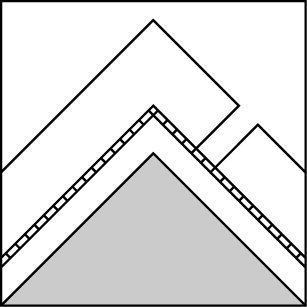Basic Information
Observation Details
Observation Date:
March 20, 2023Submitted:
March 20, 2023Observer:
SAC - Savage, Lundy (OFF DUTY)Zone or Region:
Banner SummitLocation:
Copper Mtn (6900-8700': several aspects, mostly S-W-NW )Signs of Unstable Snow
Recent Avalanches?
None ObservedCracking?
None ExperiencedCollapsing?
None ExperiencedSnow Stability
Stability Rating:
FairConfidence in Rating:
LowStability Trend:
Bottom Line
We did not see any fresh avalanches, and we did not experience any snowpack collapsing or other obvious signs of instability. The snowpack structure looks better here than in much of the forecast area. However, we avoided avalanche terrain because of the uncertainty in accurately assessing stability following rarely-seen spring snowfall amounts falling on known persistent weak layers (facets, and crust+facet combinations).
Advanced Information
Weather Summary
Cloud Cover:
ObscuredTemperature:
23-30FWind:
Moderate , SWNew/Recent Snowfall:
HST 10-15cm by 16:30 hrs, elevation dependent. Estimated 50-75% of that fell from 10:30-1630.
Winds: light except for mod on exposed middle elevation ridgetop. Based on our obs, winds were mod at upper elevations around Copper this afternoon.
Snow was S1-S3 with the heaviest precip after 2 PM.
There was a moderate amount of snow available for transport. Exposed S middle elevation slopes had extensive scalloping/dunes but no slabs. We did not observe leeward upper elevation slopes near ridgelines where fresh wind slabs would be most likely.
Snowpack Observations
Surface/near surface: 10-15cm storm snow. S-SW above about 8000' had a fairly thick (3/19), mostly supportable crust under the dense new snow, while skiing on 25-30* slopes. The margins and many lower-elevation slopes had a breakable crust (with FC underneath) under the new snow. On shady NW slopes, there is a 3/19 layer of FC that doesn't look too bad as of 3/20. Non-standard hand and pole tests indicated the crust+FC layer could become an issue with this storm where the crust is "just right" (not too thick not too thin) and it gets wind-loaded.
HS=230-270cm. The February weak layers (/218, 2/26) were down 100-120cm where we examined them. We probed some slopes where they appeared to be 130-145cm deep. Where viewed, the structure did not look bad. The layer(s) were very subtle when probing for them. On a middle elevation W aspect, the Feb18-26 interface did not fail in an ECT test. Also, it did not shear with severe, non-standard abuse following the ECT test.
Avalanche Problems
| Problem | Location | Distribution | Sensitivity | Size | Comments |
|---|---|---|---|---|---|
 Deep Persistent Slab
Deep Persistent Slab
|
|
Layer Depth/Date: 100-140cm Comments: Shaded area indicates where the problem was mostl likely, in the areas we traveled. I struggled to choose what to put for a problem. We traveled as if it was a deep slab problem: triggering is possible to unlikely, but you're unlikely to see signs of instability before triggering. |
Terrain Use
It seemed like a classic low-probability/high-consequence problem and day; we avoided avalanche terrain due to the uncertainty, even in the absence of any signs of instability.

